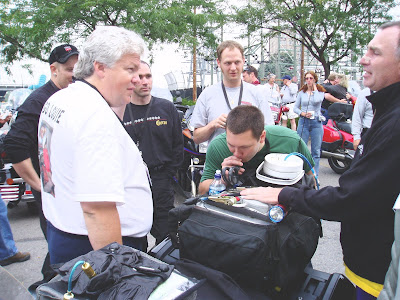Ok, more flow experiments today -
Per a Tanji tank user, who has run, and placed very high in the IBR, the recommendation was "run the main tank down to approx 50-70 miles" then open (the full) aux tank. Per said inside informant, many various designs of gravity fed aux tanks have had weird issues in draining at different main/aux tank fuel levels. [SIZE=8pt](I will ask this person if it's OK to post his PM to me, won't do so unless approved.

)[/SIZE]
So, I did. Can't argue with a LDR who has been there, done that. Ran the main to 65 miles, showing 33 mpg avg, yes, I speed. Opened the fully filled aux and rode for about an hour.
Results = static. I started at 3 bars down, and the fuel gauge remained at 3 bars down for over an hour. The only real indication was the miles traveled. Normally at 100, I'm at least at half tank indicated. This time, I remained at 3 bars consumed and it just stayed there at 150 miles. Obviously, the fuel is transferring.
My deduction is that with the main at 3/4 full, and the Aux at 4/4 full, at speed, the fuel consumed +delivery rate = 0. Meaning the aux tank was delivering the same flow rate as consumption. Tomorrow I'll test more.
BTW, since the one-way valve was too restricitve, I removed it, meaning the main can fill the aux, as RenoJohn once experinced. So I even pulled off the road to see if the main tank was *back-flowing* the aux, it was not - the filter sock was dry. BTW, I found a cool solution for keeping the vent line clean yet still able to drain, check later for pix.
Arrived home, 3 bars down, looked inside the aux tank and it's about 1/3 consumed. Very cool.
Hope this helps.





















































